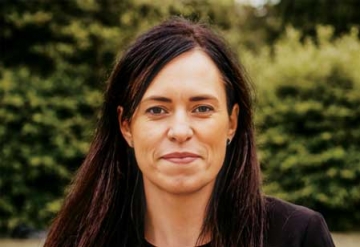THANK YOU FOR SUBSCRIBING

Creating Sustainable Designs
Hannah Leggatt, Director of Environment and Sustainability, Clancy

 Hannah Leggatt, Director of Environment and Sustainability, Clancy
Hannah Leggatt, Director of Environment and Sustainability, ClancyI was recently asked to speak at the UK’s leading construction and design show, London Build Expo. While planning what I’d like to ensure was included in the panel discussion titled ‘Learn from the Past for a Greener Tomorrow’, I found myself thinking about what I’d learnt throughout my career. Having spent, let’s call it, many years in the construction industry, I know that it’s often been a challenge to keep environmental impact at the forefront of the decisions we need to make in the industry.
Firstly, it is about ensuring environment and sustainability (E&S) is included at the concept and/or design stage of any project, and importantly, that it doesn’t just have a place at the table, but it has a voice when decisions are being made and ensuring that the right people are invited and included in those decisions. It is critical to embed and consider E&S options at the outset, and it is only by doing this that the full value and benefits can be recognised and realised. Trying to retrofit it later drives up costs, increases risk and adds complications that could so easily be avoided. We can see incredible examples of this ideology being applied successfully in the UK on high-profile projects, including Crossrail and High-Speed Two.
These programmes are celebrated for their successful delivery of the highest standards of environmental and sustainability excellence and for setting a new bar that other projects in the future will have to either meet or exceed. This is positive news for E&S professionals as we approach a new era in the industry.
Secondly, we need to ensure we learn from the past in how we approach and deal with climate change, sustainability and managing environmental impacts. It is about making sure things are done better going forward, which means moving away from saying, thinking and doing things the same as we have always done. We need to challenge that thinking and drive forward a fundamental shift in our mindset to how we approach dealing with and considering the environment. It is only through doing this that we can ensure we won’t repeat the same choices and mistakes in the future, but also ensure we can develop robust mitigations that are both sustainable and adaptable and are sensitive to the environment around us and the world we live in. Appreciating that we owe it to our planet and our home to make choices that work in harmony with it. We all have a part to play; even the smallest action taken by one person can, over time, result in a significant positive impact.
“It is critical to embed and consider E&S options at the outset, and it is only by doing this that the full value and benefits can be recognised and realized.”
Then, finally, it is around social value work, as only through addressing environmental and social inequality can we be successful in creating a more sustainable world. The United Nations recognised the importance of this as their document ‘The Future We Want’ directly addressed this by stating the following: “We also reaffirm the need to achieve sustainable development by promoting sustained, inclusive and equitable economic growth, creating greater opportunities for all, reducing inequalities, raising basic standards of living, fostering equitable social development and inclusion, and promoting integrated and sustainable management of natural resources and ecosystems that supports, inter alia, economic, social and human development while facilitating ecosystem conservation, regeneration and restoration and resilience in the face of new and emerging challenges.”
We mustn’t forget that the sustainable development goals are at the core of the 2030 agenda for sustainable development, and they directly link social value and social mobility, affirming the importance of the role that they play in achieving a sustainable future. This is because when you directly consider social value, you also start to consider how you can be more socially conscious by focusing on how your actions impact society now and in the future, both for yourself and for future generations. This thinking is also at the core of sustainable thinking and sustainable development; it is about looking after the planet now, ensuring we do things in an environmentally sensitive and sustainable manner so we and future generations can enjoy it for years to come.
For myself, I have been honoured to partner with the Social Mobility Foundation in the UK, which does incredible work to create a society where talent from all social backgrounds can be nurtured, harnessed, and rewarded (Social Mobility Foundation, n.d.). They work with individuals, businesses, and organisations to advance social mobility because they believe that success shouldn’t be determined by factors such as where you live, where you were born, or what your parents do (Social Mobility Foundation, n.d.). For those readers who reside in the UK, I would highly recommend getting in touch to understand how you can get involved in helping to advance social mobility and support reducing the equality and equity gap.
I would like to end by leaving you with a final comment from the United Nations “The Future We Want” document that, for me, perfectly describes why environment, sustainable growth and social value are so vitally important and why you cannot consider one without the other. “We recognise that people are at the centre of sustainable development, and in this regard, we strive for a world that is just, equitable and inclusive, and we commit to working together to promote sustained and inclusive economic growth, social development and environmental protection and thereby to benefit all.”
Read Also
Development of the Logistics Warehousing Market in Brazil
Driving Innovation and Preserving Tradition
Operational Leadership VS Field Leadership in the Utility Construction Business
People-First Innovation: Developing Virtual Design and Construction (VDC) Training Programs to Empower Field Team Members
Sustainable Projects: Aligning Business and Purpose in Latin America
Engage Smarter: Why Constraints Matter More Than Hazards

 Copyright © 2025 All Rights Reserved | by:
Copyright © 2025 All Rights Reserved | by: Construction Tech Review
| Subscribe | About us | Sitemap| Editorial Policy| Feedback Policy














